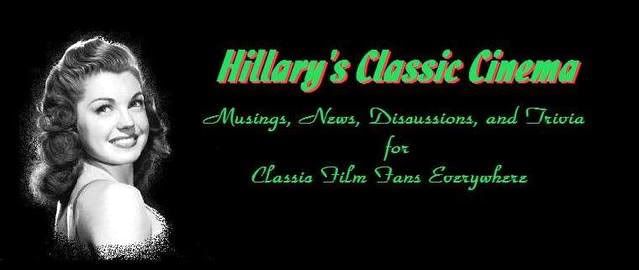
In a fate that even the MGM Publicity Department of yore would consider too uncanny to be real, April 1st marks the birthday of not one, but two of Tinseltown's brightest and most beloved stars:
Debbie Reynolds and
Jane Powell. Party on the set, anyone?!
Jane was born Suzanne Lorraine Burce in Portland, Oregon, on this day in 1929. She's probably best known for her role as Milly in the blockbuster
Seven Brides for Seven Brothers (1954), but
Jane enjoyed over a decade of box office success as filmmakers found myriad means of incorporating her skill as a coloratura soprano into musicals of the day. Retiring from film in 1957 (she was not yet 40),
she segued into stage performing, penned an autobiography in 1988, and currently lives in Connecticut. Next month will mark her 20th year of marriage to author and child actor
Dickie Moore.
El Paso-born Mary Frances Reynolds - she was later christened
Debbie by a studio mogul, but remained steadfast about retaining her true last name - came into being in 1932, and made her foray into film just sixteen years later. Her premiere movie under MGM's contract was the 1952 breakaway hit
Singin' in the Rain, considered by many to be the greatest movie musical ever made, and
Debbie instantly earned the title of America's Sweetheart, a role which she relinquished only after nearly a decade of film successes, a recording career, and the scandal that ensued when her 1955 marriage to crooner
Eddie Fisher ended in a very public divorce. Being buoyant as ever, though,
Debbie focused on stagework as the face of filmmaking changed to exclude her style of artistry, and after varied film appearances, television roles, entrepreneurial endeavors and the publication of her 1988 autobiography, my favorite girl is still in the spotlight today, actively promoting The Thalians, working to preserve the history of cinema's golden age, and frequently touring her one-woman show.
Being young, immensely popular and employed by the same studio,
Jane and
Debbie were often featured in films that were quite similar in style, content, and cast, and the pretty pair even co-starred together in a number of movie musicals, including
Athena and
Hit the Deck. Their best film together? 1950's
Two Weeks With Love, a quaint comedy set in a Victorian-era vacation resort that features one of
Jane's spectacular arias, an uber-romantic Ricardo Montalban, fireworks larceny, and an overly amorous
Debbie, gorging herself on watermelon while admiring the spindly legs of a half-dressed
Carlton Carpenter. Yeah. It's that good.
Hillary's Classic Cinema wishes a very happy birthday to two of its favorite ladies!
Labels: Birthdays, Debbie Reynolds, Jane Powell
 Bleak, stirring, and a portrait of desperation in scratchy black-and-white, The Bicycle Thief observes the turns of disillusion and contentment which cycle through the face of a young, gaunt man seeking to support his family in mid-2oth century Rome: like most of his working-poor contemporaries, security and happiness are evasive for him until a much-needed job is attained, then forfeited upon the occasion of the titular theft. But masterful de Sica seems to have left his plot and his dialogue intentionally simple to highlight the anguish the larceny creates for those who feel its effect - and the film follows its leads' struggle for a just and deserved denoument til the final few minutes of this moving masterpiece.
Bleak, stirring, and a portrait of desperation in scratchy black-and-white, The Bicycle Thief observes the turns of disillusion and contentment which cycle through the face of a young, gaunt man seeking to support his family in mid-2oth century Rome: like most of his working-poor contemporaries, security and happiness are evasive for him until a much-needed job is attained, then forfeited upon the occasion of the titular theft. But masterful de Sica seems to have left his plot and his dialogue intentionally simple to highlight the anguish the larceny creates for those who feel its effect - and the film follows its leads' struggle for a just and deserved denoument til the final few minutes of this moving masterpiece.







